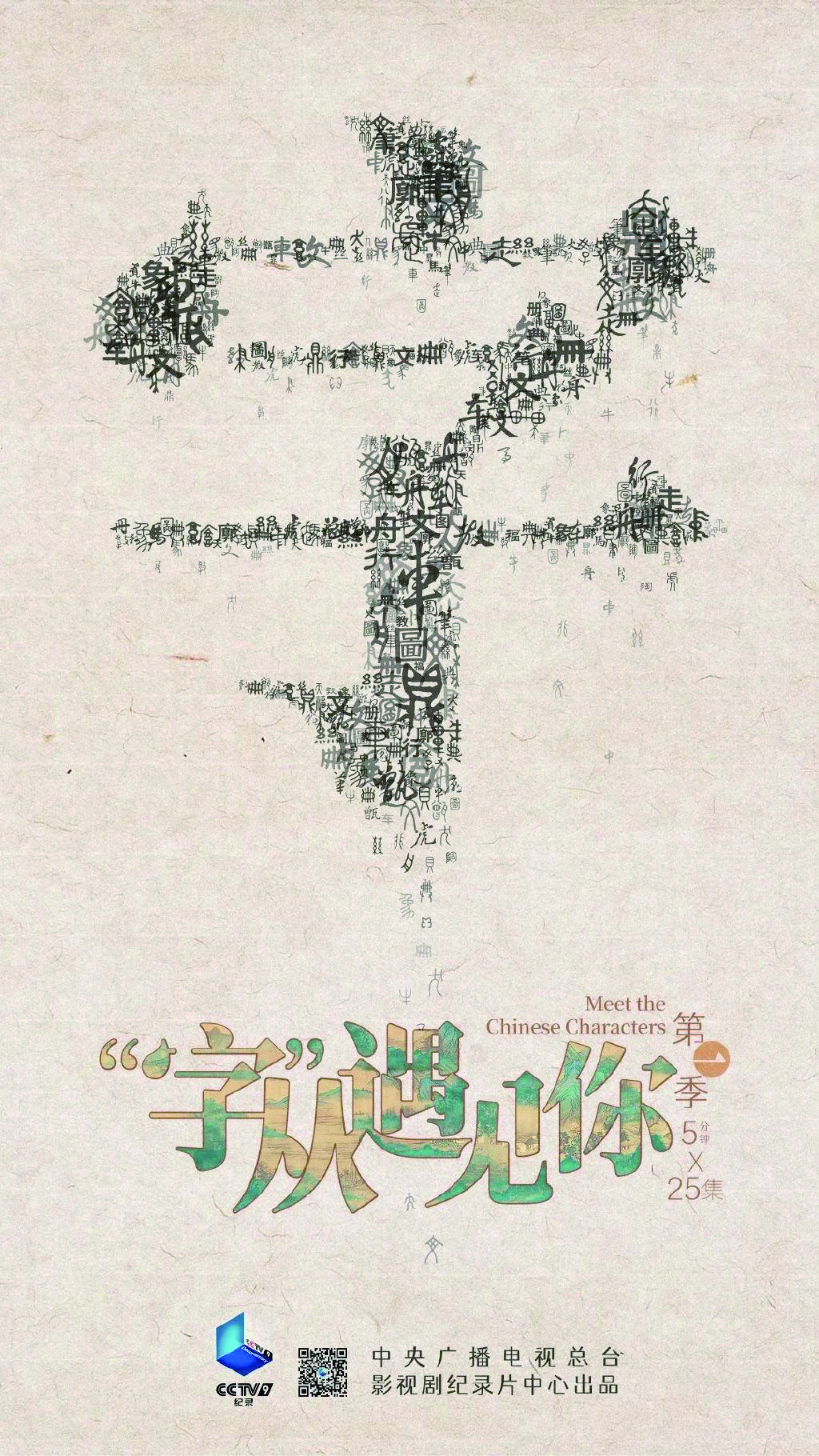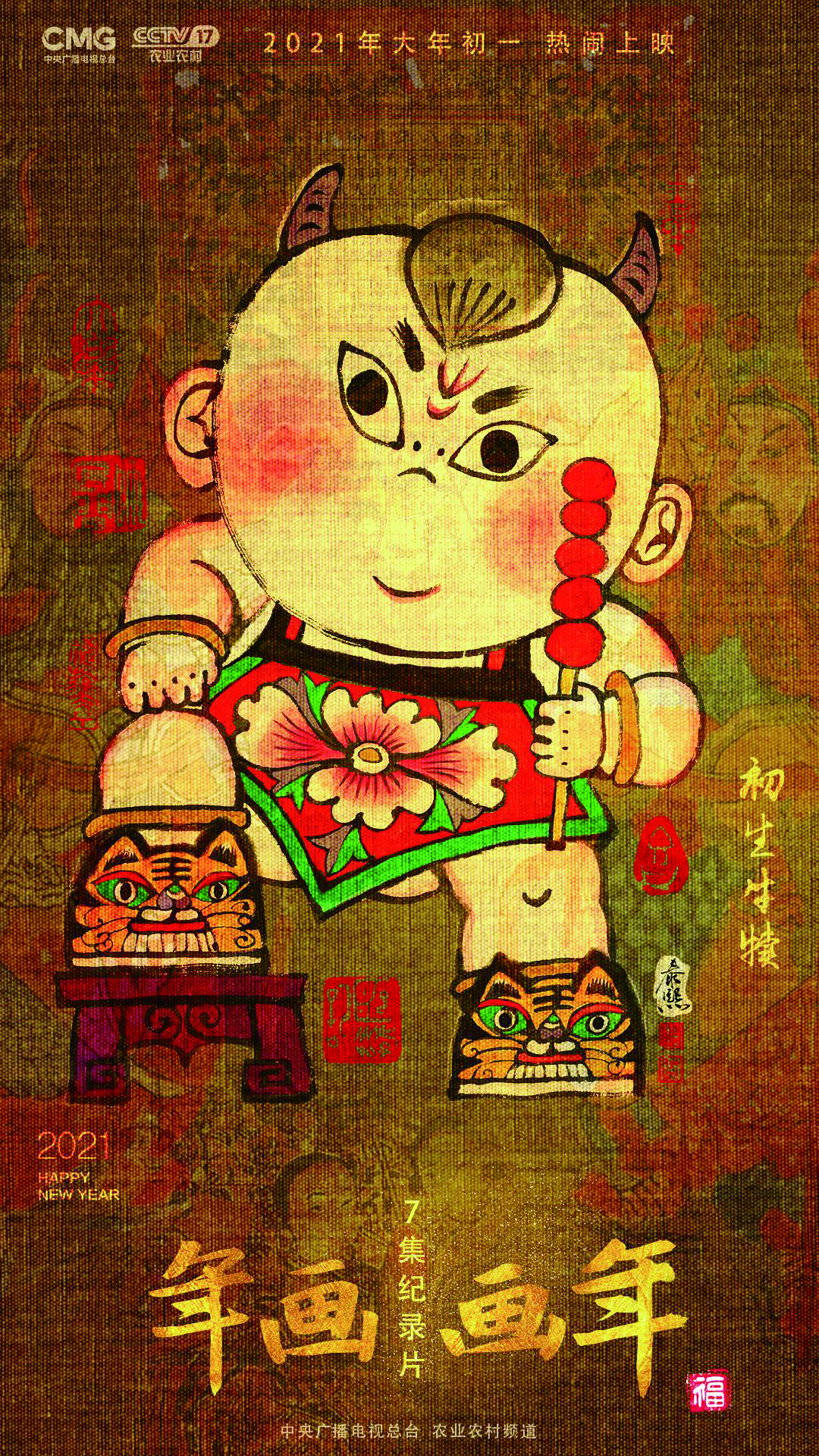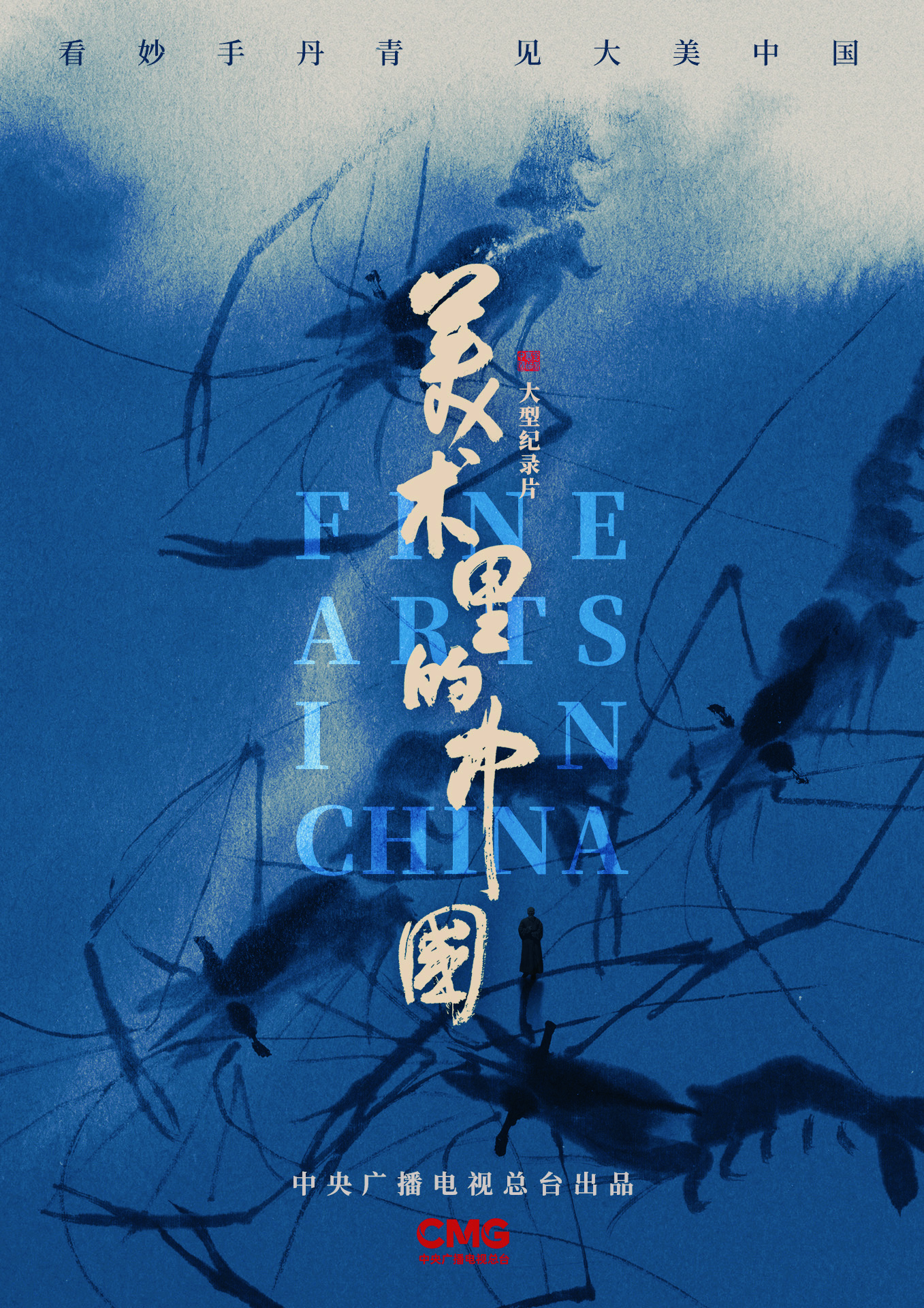Recently, China Central Radio and Television launched the documentary "China in the Fine Arts", which sparked discussion once it was broadcast. Based on the history of modern Chinese art, the film integrates a variety of visual expression elements, through the dynamic presentation and three-dimensional expression of classic art works, to read and review its creative techniques and background stories. As a result, this type of art documentaries with themes of painting, sculpture, architectural art and arts and crafts, focusing on works of art, art genres and artists, have once again returned to the public eye.
Looking back at the development of Chinese documentaries, art documentaries have always been one of the important types of Chinese documentaries. From the documentary film "The Painter Qi Baishi" in 1955, which reflected Qi Baishi's paintings and personal life, "The Sculptor Liu Huanzhang" in 1983, which triggered a discussion on the aesthetic characteristics of a TV documentary, to "When the Louvre Meets the Forbidden City" in the new century, etc. From the documentary works of mutual learning symbols, to the "Century Masters", a large-scale biographical documentary project focusing on modern art masters and painting masters, which was launched in the past ten years, the creation of art documentaries is generally diverse.
Art documentaries can be divided into three mainstream narrative modes: artists as the core organization content, works or art genres as the core organization content, and the exploration of the relationship between artists or works and the times as the core organization content. No matter which mode, it is mainly based on an explanatory framework that combines filming, expert interviews and "Voice of God", with obvious thematic characteristics, the inherent flexibility of art is difficult to be released on the screen, and the expressiveness of digital narrative is not enough. is actually activated. In recent years, with the trend of postmodernism, the rapid development of digital technology and the wave of deep media integration, documentaries are experiencing continuous expansion and innovation of ontological boundaries and aesthetic concepts under the drive of technology and the thinking of "breaking the circle". China's documentary production practice has ushered in a period of innovation and development, and art documentaries are also different from the past, showing a trend of "integration".
Documentary "melt together", "melt" in the concept. In the history of Chinese documentary development, every time a new technology penetrates into the field of documentary from the outside to the inside, it is the concept of documentary that is eventually deconstructed or even subverted. "Fusion" as a concept is particularly evident in the practical innovation of art documentaries in recent years. Since 2018, the micro-documentary "If National Treasures Can Talk" has been broadcast on CCTV Documentary Channel. It uses a variety of digital presentation technologies to tell the past and present of national treasures, cultural relics and other arts and crafts works, and uses multiple materials and a lively voice to realize the "younger" art documentary. Expressed and practiced the value and purpose of "making national treasures come alive", it has been launched for three seasons so far. Since then, more art documentaries have broken the shackles of the traditional expository framework and adopted a more intimate expression to interpret the theme and content of the work. In 2020, the first domestic documentary about famous paintings, "How to Talk About This Painting", was launched on Tencent Video. It uses real people to perform deconstructed and personalized narratives on famous paintings, and vividly conveys the knowledge of relevant paintings. Conventional live-action shooting, innovative animation presentation, real-life scene interpretation, and the use of many open materials have opened up the creative boundaries of documentaries, and also impacted the inherent concepts of some documentaries.

Nowadays, the creation trend of art documentaries "melting together" is mainly because technological innovation drives the development of documentaries to connect with the media fusion environment. It is the embodiment of changes in media technology and media ecology in the field of documentaries, and it also reflects the part of postmodernism on tradition. deconstruct. The change of the underlying logic makes the documentary move towards the stage of deep integration in the creative thinking and production practice. With the help of technical aesthetics, art documentaries are expanding the possibility of artistic expression in an unprecedented way, and the Chinese aesthetic culture and spirit, together with the subject of the record, have been interpreted and presented in multiple voices, forms, and levels to achieve The effect of "melting" to "living". Some "integrated" art documentaries are even more subtle, with the virtual and the real coexisting, and the charm is endless. Through these vivid and specific artwork images and character stories, the audience can have a deeper understanding of history and culture, and feel the humanistic connotation and aesthetic spirit. At the same time, in the context of integration and development, documentaries can use beauty as a medium to construct an oriental aesthetic discourse and demonstrate the confidence of Chinese culture.
Chinese art is rooted in the rich soil of Chinese excellent culture, which is a solid foundation for cultural self-confidence, and has also become the source of content for the integration and innovation of Chinese art documentaries. General Secretary Xi Jinping proposed that "art, art, science, and technology complement each other, promote each other, and complement each other", and the four are now unified in an art documentary that integrates innovation and development. By integrating and balancing "art" and "technology", "meaning" and "meaning", art documentaries that are the same as art express art, interpret history, and preserve culture. The "integrated" art documentaries are used in aesthetic education, knowledge transfer, cultural It has a very positive role in inheritance and consensus building, and also brings a positive and constructive impact on the society.
In addition, the rise of fusion documentaries, represented by art documentaries "Fusing Together", not only signifies that in the "public era" of documentaries, the production of documentaries is moving closer to users, but also indicates that the main body of the industry is conducting a boundary test. The construction of pan-documentary content ecology. On the one hand, this kind of construction will speed up the formation of a "big documentary industry", and it will also allow documentaries to be reborn after a brief period of identity anxiety. This will be a process of transforming concepts, types and industries together.
(The author Han Fei is a lecturer at the School of Television, Communication University of China; Wang Hou is a graduate student of the School of Television, Communication University of China. This article was originally published in the 4th edition of "Literary News" on June 15, 2022)
Looking back at the development of Chinese documentaries, art documentaries have always been one of the important types of Chinese documentaries. From the documentary film "The Painter Qi Baishi" in 1955, which reflected Qi Baishi's paintings and personal life, "The Sculptor Liu Huanzhang" in 1983, which triggered a discussion on the aesthetic characteristics of a TV documentary, to "When the Louvre Meets the Forbidden City" in the new century, etc. From the documentary works of mutual learning symbols, to the "Century Masters", a large-scale biographical documentary project focusing on modern art masters and painting masters, which was launched in the past ten years, the creation of art documentaries is generally diverse.
Art documentaries can be divided into three mainstream narrative modes: artists as the core organization content, works or art genres as the core organization content, and the exploration of the relationship between artists or works and the times as the core organization content. No matter which mode, it is mainly based on an explanatory framework that combines filming, expert interviews and "Voice of God", with obvious thematic characteristics, the inherent flexibility of art is difficult to be released on the screen, and the expressiveness of digital narrative is not enough. is actually activated. In recent years, with the trend of postmodernism, the rapid development of digital technology and the wave of deep media integration, documentaries are experiencing continuous expansion and innovation of ontological boundaries and aesthetic concepts under the drive of technology and the thinking of "breaking the circle". China's documentary production practice has ushered in a period of innovation and development, and art documentaries are also different from the past, showing a trend of "integration".

"Words" From Meeting You Poster
Documentaries "melting together" have become a trend. The so-called "integration" of documentaries, which is driven by new technologies, innovatively integrates various open materials, audio-visual elements and expression techniques, and realizes the paradigm shift in its type creation. breakthrough innovation. The "integration" of documentaries is a breakthrough phenomenon of documentaries in the context of "documentary +". The core is to solve the problem of user viewing of documentaries. With the trend of the industrialization of documentaries, user psychology, viewing behavior and viewing experience have increasingly become important considerations for the construction of documentaries, and the integrated expression and formal innovation of documentaries is an important way to acquire users. The "integration" of documentaries is a set of concepts, means, and techniques for expression and presentation, and still follows the principle of non-fiction, which gives birth to a new genre paradigm of "integrated documentaries". The current innovative practice of "Fusion" in art documentaries can be attributed to this, and it also belongs to the category of fusion documentaries.Documentary "melt together", "melt" in the concept. In the history of Chinese documentary development, every time a new technology penetrates into the field of documentary from the outside to the inside, it is the concept of documentary that is eventually deconstructed or even subverted. "Fusion" as a concept is particularly evident in the practical innovation of art documentaries in recent years. Since 2018, the micro-documentary "If National Treasures Can Talk" has been broadcast on CCTV Documentary Channel. It uses a variety of digital presentation technologies to tell the past and present of national treasures, cultural relics and other arts and crafts works, and uses multiple materials and a lively voice to realize the "younger" art documentary. Expressed and practiced the value and purpose of "making national treasures come alive", it has been launched for three seasons so far. Since then, more art documentaries have broken the shackles of the traditional expository framework and adopted a more intimate expression to interpret the theme and content of the work. In 2020, the first domestic documentary about famous paintings, "How to Talk About This Painting", was launched on Tencent Video. It uses real people to perform deconstructed and personalized narratives on famous paintings, and vividly conveys the knowledge of relevant paintings. Conventional live-action shooting, innovative animation presentation, real-life scene interpretation, and the use of many open materials have opened up the creative boundaries of documentaries, and also impacted the inherent concepts of some documentaries.

Poster of "New Year's Paintings"
The documentary "melts together" and "melts" expresses. The difficulty in creating art documentaries lies in how to transform a fixed two-dimensional picture into a dynamic image combining audio-visual. Through the empowerment of new imaging technology, the release of the expressive power of audio-visual language to art works is the key to the "integration" of art documentaries. From the folk craft documentary "New Year Paintings: Painting Year" broadcasted during the Spring Festival last year, to this year's well-received series of micro-documents "China in Art" and "Words From Meeting You", to the joint venture between Communication University of China and Chinanews.com The "Decoding Chinese Cultural Gene" series of cultural fusion videos, paintings, pictographic symbols, arts and crafts and other materials, under the blessing of digital media technology, broke through the assumed attributes of "picture frame" and "fixed object" from the perspective of time and space. The dynamic extension of two-dimensional art works in three-dimensional space creates a spectacle of screen images for the audience. Whether it is a door boy doll with a tiger's head and a head, or a mist of ten thousand pine trees with dense ink and wash, or a moving and jumping Chinese character symbol, the processing of these art materials is influenced by the "fusion" thinking of the documentary. From Danqing Monument, it is transformed from static to dynamic presentation through special photography techniques, digital special effects synthesis, etc., so that "beauty in imagery" and "beauty in context" are rejuvenated with the support of new technology aesthetics.
"China in Art" poster
The documentary "melts" and "melts" interacts. Taking "China in the Fine Arts" as an example, each episode of this documentary begins with a painting hanging on the wall, which is substituted into the first perspective, making the audience seem to be in an art museum, and then enters the documentary using a variety of techniques. In the spatial situation created by the expression technique, it interacts with the content of related art elements. In the first episode of "Shrimp", the perspective follows the swimming shrimp group into the bottom of the lake, watching the gray crabs fight and the water and grass are green. In the episode "Pictures of the Rivers and Mountains to Be Refined", the audience's perspective enters the painting, from different perspectives to see the mountains, rivers and clouds, and change the scenery when they move, and feel the thousands of mountains standing on the wall of Huashan and the surging pine forest. As a video and digital art museum, the "integration" of art documentaries brings the audience closer to the works of art, and examines the beauty of the collection from the microscopic point; it allows "people to travel in the painting", and realizes the aesthetics of "seeing" and "experience" convert.Nowadays, the creation trend of art documentaries "melting together" is mainly because technological innovation drives the development of documentaries to connect with the media fusion environment. It is the embodiment of changes in media technology and media ecology in the field of documentaries, and it also reflects the part of postmodernism on tradition. deconstruct. The change of the underlying logic makes the documentary move towards the stage of deep integration in the creative thinking and production practice. With the help of technical aesthetics, art documentaries are expanding the possibility of artistic expression in an unprecedented way, and the Chinese aesthetic culture and spirit, together with the subject of the record, have been interpreted and presented in multiple voices, forms, and levels to achieve The effect of "melting" to "living". Some "integrated" art documentaries are even more subtle, with the virtual and the real coexisting, and the charm is endless. Through these vivid and specific artwork images and character stories, the audience can have a deeper understanding of history and culture, and feel the humanistic connotation and aesthetic spirit. At the same time, in the context of integration and development, documentaries can use beauty as a medium to construct an oriental aesthetic discourse and demonstrate the confidence of Chinese culture.
Chinese art is rooted in the rich soil of Chinese excellent culture, which is a solid foundation for cultural self-confidence, and has also become the source of content for the integration and innovation of Chinese art documentaries. General Secretary Xi Jinping proposed that "art, art, science, and technology complement each other, promote each other, and complement each other", and the four are now unified in an art documentary that integrates innovation and development. By integrating and balancing "art" and "technology", "meaning" and "meaning", art documentaries that are the same as art express art, interpret history, and preserve culture. The "integrated" art documentaries are used in aesthetic education, knowledge transfer, cultural It has a very positive role in inheritance and consensus building, and also brings a positive and constructive impact on the society.
In addition, the rise of fusion documentaries, represented by art documentaries "Fusing Together", not only signifies that in the "public era" of documentaries, the production of documentaries is moving closer to users, but also indicates that the main body of the industry is conducting a boundary test. The construction of pan-documentary content ecology. On the one hand, this kind of construction will speed up the formation of a "big documentary industry", and it will also allow documentaries to be reborn after a brief period of identity anxiety. This will be a process of transforming concepts, types and industries together.
(The author Han Fei is a lecturer at the School of Television, Communication University of China; Wang Hou is a graduate student of the School of Television, Communication University of China. This article was originally published in the 4th edition of "Literary News" on June 15, 2022)










Comments